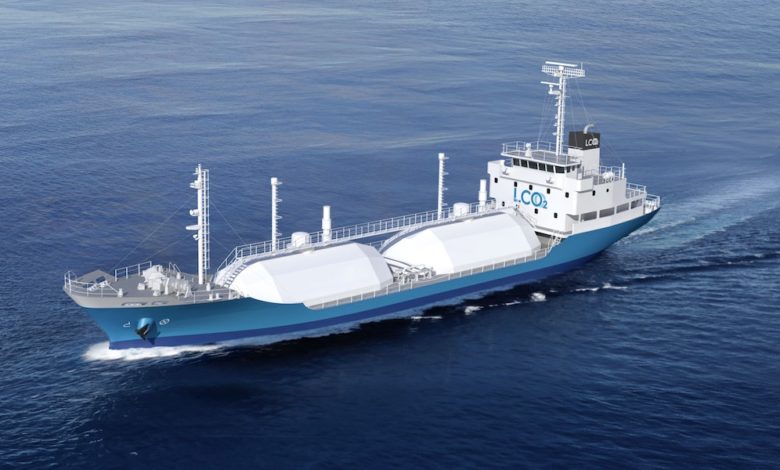Why transport of CO2 in liquid form is not the best idea

Henrik Madsen, a sustainability advisor and former CEO of DNV, makes the case for dry ice in containers.
A 1.5 degrees Celsius global warming scenario by 2100 from the Intergovernmental Panel for Climate Change (IPCC) assumes an annual CO2 reduction of 6bn tons from carbon capture and storage by 2050. This CO2 must be transported from a capture site to a storage or utilisation site. For comparison, today’s annual transport of coal is about 7.5bn tons.
CO2 can exist in gas, liquid, solid or supercritical fluid form depending on temperature and pressure.
Different CO2 capture technologies exists. Chemical absorption, membrane separation and electro-chemical capture systems deliver the captured CO2 in gas form at a high purity. Cryogenic capture technologies deliver the captured CO2 in solid form as dry ice.
CO2 storage in deep onshore or offshore geological reservoirs takes place with the CO2 in supercritical fluid phase.
Icelandic company CARBFIX has developed storage in shallow onshore or offshore wells in the young basalt rock covering most of Iceland. In this technology CO2 is dissolved in water, which is pumped into the wells under moderate pressure.
Transport of CO2 is most economic in dedicated CO2 pipelines, when the volumes are large and the distances not too long. In some cases, this is true even if the transport includes an ocean leg. For smaller volumes or long ocean leg transports, it is more economic to transport CO2 in liquid or solid form.
Up to now everyone appears to assume that such CO2 transport will be in liquid rather than solid form. Plans are therefore made for introduction of thousands of ISO cryogenic, pressure CO2 tank trucks, and construction of specialized liquefied CO2 tankers (lCO2 tankers) and intermediate C-type storage tanks at modal shifts, and the first constructions have been started. It is, however, not possible in practice to develop such a transport chain from scratch in time to meet the demand. It will also be an expensive CCS value chain and too expensive to ensure the necessary uptake.
A more promising alternative is to transport CO2 in solid form as dry ice at atmospheric pressure and -78° Celsius.
The dry ice can be produced from captured CO2 in gas form by direct cooling or from depressurizing liquid CO2.
The CO2 is already in solid form if the capture is by a cryogenic process.
The dry ice can be transported in standard 20 ft ISO containers, which can be filled and emptied by simply blowing the dry ice when in pellet form. The containers must have an internal insulation. Insulation qualities used in building construction are sufficient and will lead to a loss of CO2 due to sublimation of less than 0.2% per day. Such insulation leaves a free space inside the container for about 25 tons of CO2 pellets. A pressure relief valve must be installed at the top of the container.
The containers are inexpensive and with amble availability – the cost is less than 5% of the alternative ISO cryogenic, pressure CO2 tanks. They can be transported by existing trucks, trains, barges or ships. Container feeder ships or various bulk carriers including open hatch bulk carriers can be utilized. The day rates for such ships are less than 10% of those for a future lCO2 tanker. The dry ice container solution does not require intermediate storage tanks at modal shifts.
Finally, the dry ice transport mode is safe and it takes place under atmospheric pressure, the cargo handling is simple, and it is not very sensitive to impurities in the captured CO2.


Dry ice in insulated 20′ boxes?
Sublimation of 0.2% per day?
An FAA study from 2006 quotes 2.0% per HOUR in the case of 5lb dry ice packages being used in a 6 hour flight starting at 22C and ending at 29C, or 48% per day.
At that rate, the loads of dry ice would have evaporated in a couple of days, even in cool ambient temps.
Passively insulated standard 20′ boxes will almost certainly not be a successful transportation method for dry ice at -79C.
Having spent a lifetime in liner shipping and in the transportation of perishables, I can only suggest that there is a valid reason why active refrigeration and cryogenic containers are designed and operated – because they are necessary.